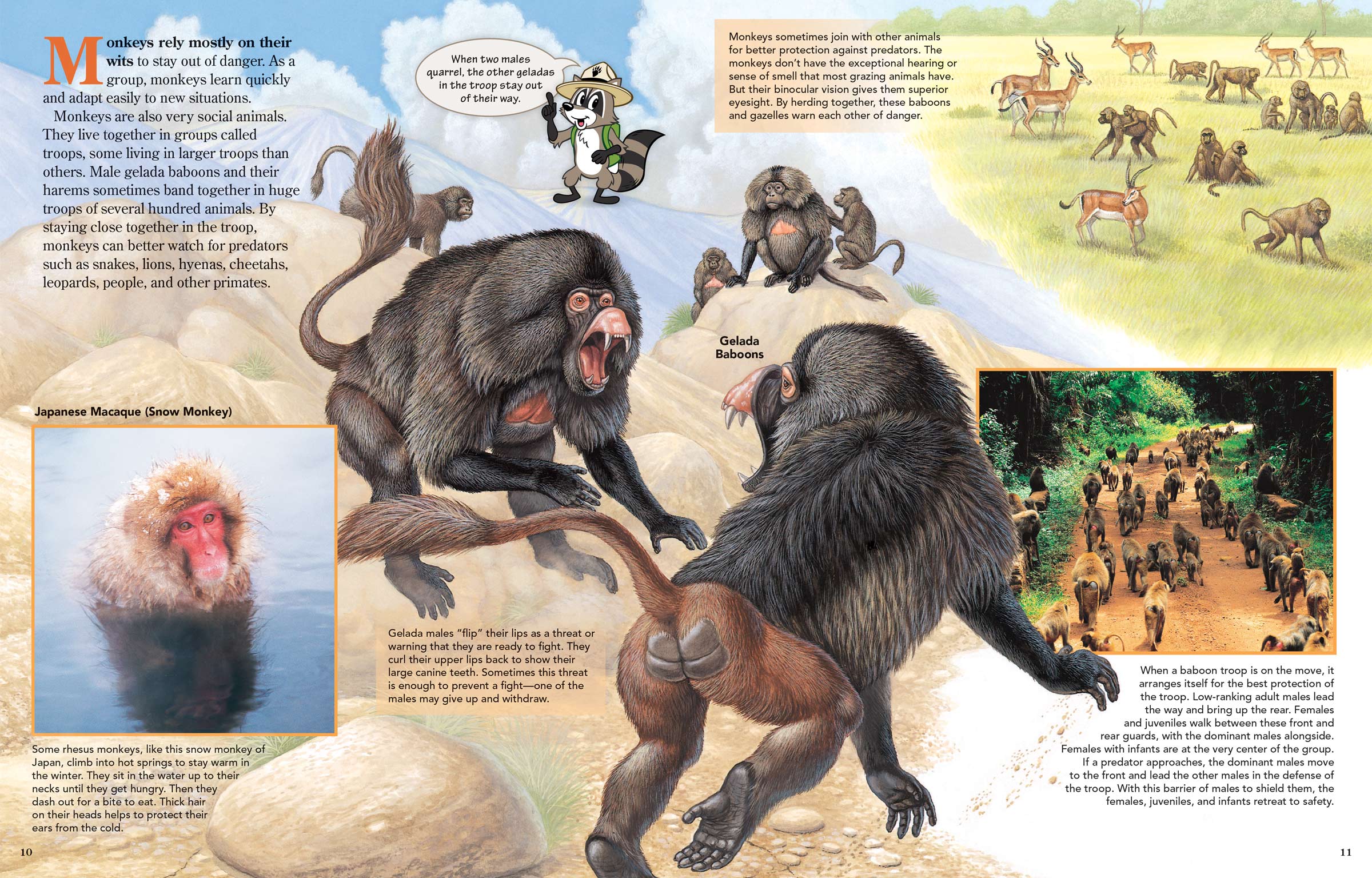
How to Stay Out of Danger
ByMonkeys rely mostly on their wits to stay out of danger. As a group, monkeys learn quickly and adapt easily to new situations.
Monkeys are also very social animals. They live together in groups called troops, some living in larger troops than others. Male gelada baboons and their harems sometimes band together in huge troops of several hundred animals. By staying close together in the troop, monkeys can better watch for predators such as snakes, lions, hyenas, cheetahs, leopards, people, and other primates.
When two males quarrel, the other geladas in the troop stay out of their way.
 Gelada males “flip” their lips as a threat or warning that they are ready to fight. They curl their upper lips back to show their large canine teeth. Sometimes this threat is enough to prevent a fight—one of the males may give up and withdraw.
Gelada males “flip” their lips as a threat or warning that they are ready to fight. They curl their upper lips back to show their large canine teeth. Sometimes this threat is enough to prevent a fight—one of the males may give up and withdraw.
Some rhesus monkeys, like this snow monkey of Japan, climb into hot springs to stay warm in the winter. They sit in the water up to their necks until they get hungry. Then they dash out for a bite to eat. Thick hair on their heads helps to protect their ears from the cold.
Monkeys sometimes join with other animals for better protection against predators. The monkeys don’t have the exceptional hearing or sense of smell that most grazing animals have. But their binocular vision gives them superior eyesight. By herding together, these baboons and gazelles warn each other of danger.
When a baboon troop is on the move, it arranges itself for the best protection of the troop. Low-ranking adult males lead the way and bring up the rear. Females and juveniles walk between these front and rear guards, with the dominant males alongside. Females with infants are at the very center of the group. If a predator approaches, the dominant males move to the front and lead the other males in the defense of the troop. With this barrier of males to shield them, the females, juveniles, and infants retreat to safety.

